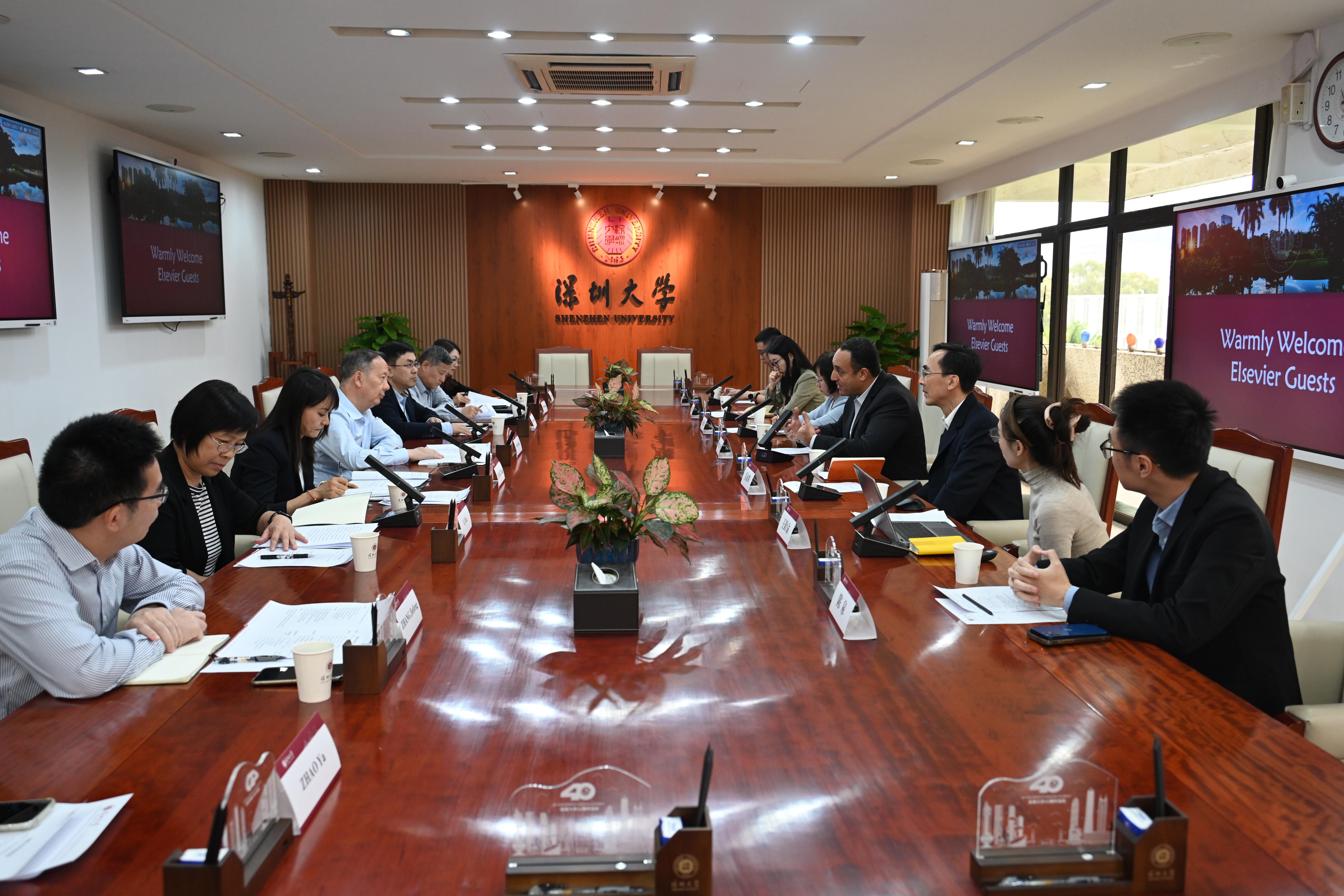On October 27, Said Taha, Senior Vice President at Elsevier, along with his delegation, visited Shenzhen University (SZU).

Mao Junfa, President of SZU, warmly welcomed the delegation and briefly introduced SZU's development achievements. He stated that after over forty years of growth, SZU has become a high-level comprehensive university with distinctive features, strong capabilities, and a good reputation and significant influence both in China and abroad. He emphasized that internationalization is one of the key directions for SZU's development. The university has established, successively, the first Confucius Institute in Saudi Arabia, the Shenzhen University Tokyo College, and the Shenzhen University Hong Kong College. He noted that Elsevier is an important partner for SZU in disseminating scientific research outcomes, and that the university's growing research impact and international influence have been consistently supported by Elsevier. He expressed his hope that both sides would strengthen collaboration to further enhance SZU's research impact and global visibility.
Said Taha introduced Elsevier's recent developments. He noted that, as a world-leading scientific publishing and information analytics company, Elsevier consistently remains at the forefront of technology by adopting artificial intelligence and machine learning. He emphasized the company's active contributions in organizing academic authors and collecting data, as well as its established collaborations with numerous Chinese universities. He also remarked that SZU's rapid development and its synergy with Shenzhen's innovative spirit provide a valuable reference for higher education institutions worldwide. In recent years, Elsevier and SZU have collaborated in multiple fields, including data and academic publishing. He expressed his hope that deepened exchanges and cooperation would further enhance SZU's international reputation.
Following the meeting, the two sides engaged in in-depth discussions on SZU's scientific research data, future collaboration directions, promotion of interdisciplinary development, recruitment of scientific research talent, database training, and optimization of access mechanisms. The visit concluded with an exchange of commemorative gifts and group photos.

